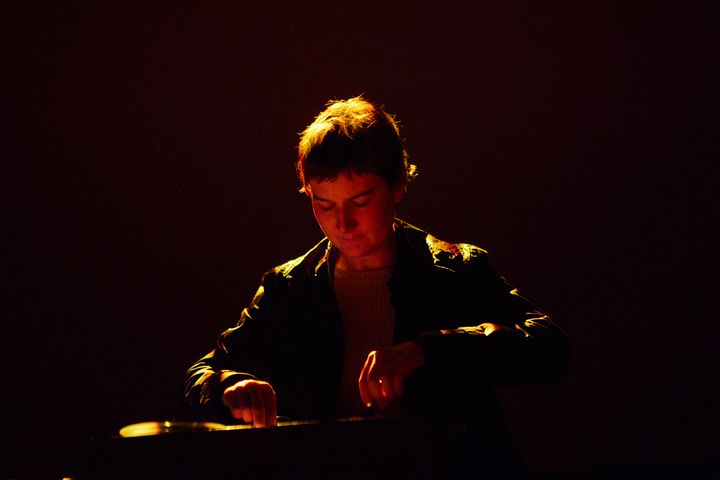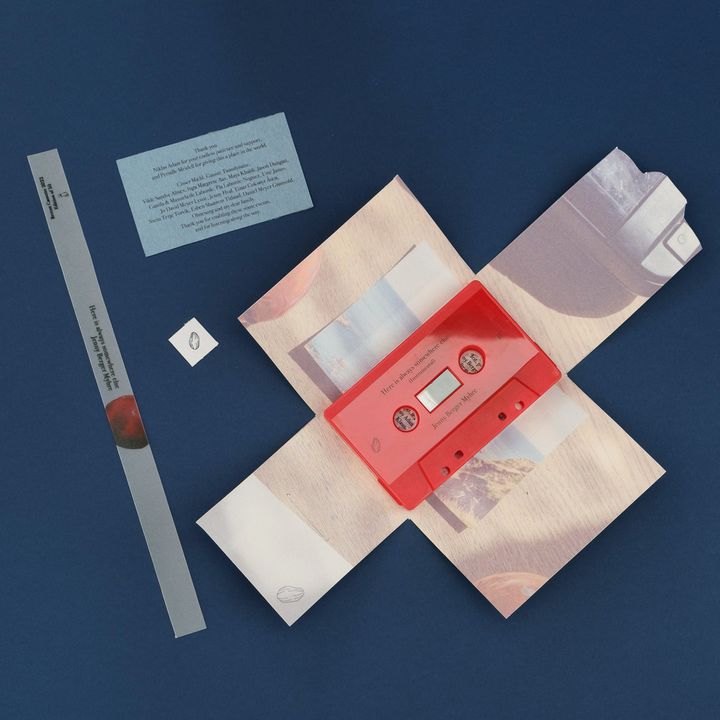Feature: Review of 2017
2017 has been ATTN:Magazine’s best year. There are several reasons for this. Firstly, the past 12 months have been my most prolific: over 200 articles were published on the site in 2017. I poured more time into the site than ever before, and the way I spent this time has never been more diverse. Furthermore, writing for ATTN has never felt so good; periods of writer’s block emerge and pass with tidal inevitability, and at several points this year I’ve felt something close to what I understand to be a state of flow. I’m learning how to structure my day and writing environment to get the most out of ATTN, tweaking everything from my rate of caffeine intake to the formulae that props up my promo spreadsheet.
It’s felt important to put everything into ATTN. As I become increasingly anxious about my general relationship with sound and listening – where streaming services thrive off sabotaging my engagement with the present tense, always promising something else, with “up next” boxes and recommendations preaching the inadequacy of the current experience – I’ve been determined to use ATTN to push back. It’s worrying that the music critique of some major music sites is drifting in the opposite direction, using likenesses and perceived stylistic allegiances as primary methods of description, placing the reviewed album upon the landscape of music and fleeting trend, overlooking sensory intrigue to instead offer a macro-level justification of where this music fits – essentially, a written equivalent of wandering impatiently away from the current experience and toward the possibilities elsewhere. As such, ATTN needs to celebrate the sensation of now: to shake free of the pacification and distraction that resides in the ever-renewing possibility of something else; something that isn’t this.
Picking up the microphone played a huge part. In my review of 2016, I spoke about the imminent start of the ATTN:Magazine radio show on Resonance Extra. There have now been 12 episodes, almost all of which have centred on a conversation with the founder of a record label or organisation. I’ve been so inspired by the enthusiasm of my guests – when Adam Barringer of Champion Version raved about the experience of lathe-cutting Richard Chartier’s Talk The Pleasure Out Of It (which involved quality-checking every copy by listening to the dubbing process in real-time); when Sietse Van Erve of Moving Furniture spoke about his frustration that so much incredible sound art was drifting under the radar; when Delphine Dora explored her interest in the intersection between song and abstract texture; when Phoene Somsavath turned our interview into a musical composition in itself. As well as inspiring me to imbue ATTN with similar enthusiasm, my conversations on Resonance Extra reminded me that these labels and organisations are vital: not only as means of promoting music that may otherwise go unheard, but as human points of convergence upon the vast landscape of music and sound art. While tracks are algorithmically categorised or bundled into playlists built around accessorising the listening experience (music to gym to, music for the morning), these organisations instil the act of curation with human intimacy, the desire to cultivate community and a dedication to the practice of deep, unsubordinated listening.
2017 also saw the start of ATTN’s first podcast, called Crucial Listening. I’ve been excited about the potential of podcasts for some time now, particularly as a medium for long-form audio. Most of my favourite podcasts take the form of 1-2 hour discussions that permit deviations away from the central topic, digging deep into unexpected territory, accumulating intimacy and conversational momentum in real-time, travelling at the pace of a discussion rather than the constraints of a radio schedule. I picked a theme inspired by one of my favourite interview questions (“what records have you been listening to recently?”), and asked experimental musicians and sound artists to discuss three albums that are important to them. Just as I’d hoped, Crucial Listening instigated interviews of an entirely different sort: from Aaron Turner’s deep obsession with the evolution of Metallica, to the appreciation of Justin Bieber shared by Richard Youngs and his family; from Sarah Davachi’s exploration of alternate tunings inspired by Terry Riley, to Jon Mueller’s devastating story of meeting a very special artist (a remark, perhaps on the one-sided intimacy of listening to recorded media). Crucial Listening has been my favourite aspect of ATTN:Magazine in 2017. I’ve already got several episodes lined up for the new year.
I’ve also had some wonderful interviews in print. Yeah You told me all about the process of recording their jams in a moving car, while Khyam Allami left me speechless with his account of confronting burnout back in 2016. Mart Avi kindly let me in on his wonderful video concept for his song “Blind Wall” (which I’m still enjoying regularly), while Jenny Berger Myhre and I traded thoughts on feeling nostalgic in our mid-20s. Unlike last year, a vast majority of these interviews were conducted over email. It’s a medium often maligned for its rigid back-and-forth, incapable of steering into unexpected avenues of discussion or mining the questions that reside within answers. Yet in 2017, I’ve tried to explore the unique potential of an interview format that resists the pull of real time. While the podcast and radio show explore the possibilities of actual conversation, written interviews have become a place to untangle those more intricate, elaborative lines of questioning. For example: Himukalt’s story of her encounter with “the girl in the bar”, or Tavishi’s explanation of the relationship between biological sequences and music, or the investigation into the numerous ways that improvisation informs the activities of the Nomadic Female DJ Troupe. All of these become more lucid for the reflective, patient craft of the written word, where memories and concepts can be reconsidered, sentences restructured, adjectives refined.
Amidst all the change, review-writing has felt like a constant (as it always does). In 2017 I’ve taken to exclusively writing album reviews in the morning. I listen once through as I sip my coffee, during which time I can almost feel an electric warmth returning to my brain wiring. Mental images and flashes of phrasing start to emerge; blurry to begin with, then in greater clarity. On the second listen I start to capture my thoughts on the page. I keep listening until sentences materialise. During this process, I’m sometimes presented with a theme upon which to hang my speculative understanding: Eyes To The Height by James Murray becomes a dance between promise and unfulfilment, Tape 1 by Enderie aligns into a dance music of urban pollution and construction, while the collages of Manuella Blackburn pay tribute to the obsessions that stampede the mind while asleep and awake. Regularly I’m dropped into atmospheres that feel tactile, flooding my other senses via the synaesthesic entry point of hearing: Far Rainbow’s ultra-humid room, Nac/Hut Report’s decaying house, List Of Moths’ gruesome subterranean club. The account of my listening experience never feels exact. I consider a review “finished” when I’ve exhausted my ability to capture it.
Occasionally I’ve been throwing around thoughts of starting some sort of net label in 2018 – perhaps connected to ATTN, perhaps not. We’ll see if that comes to fruition. I’m determined to listen deeper and for longer this year, and reciprocate the efforts of those artists, labels and organisations that celebrate an utter engagement with sonic creation. Thanks for making the last 12 months so enriching. Here’s to letting the vibrations consume you.


